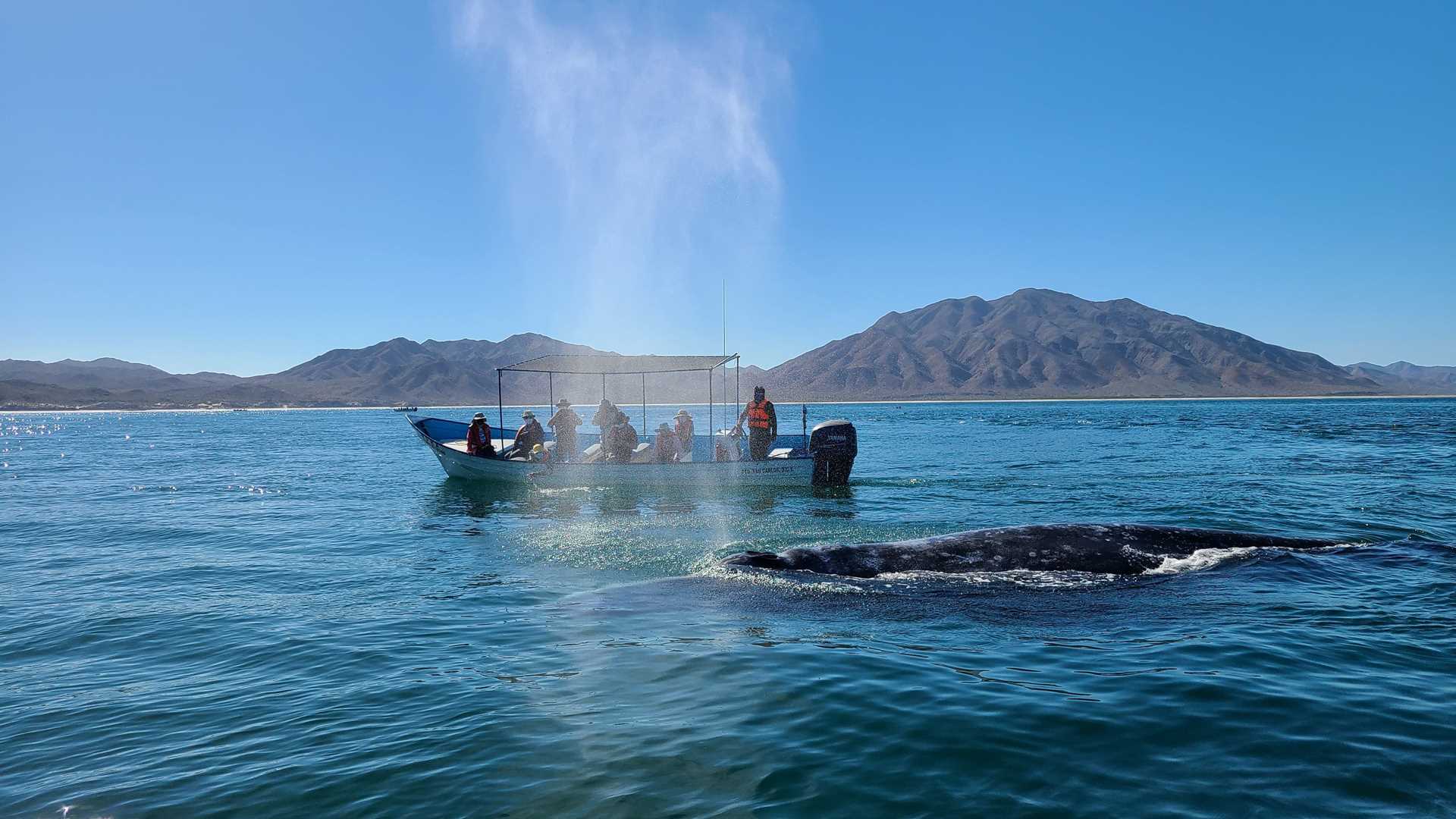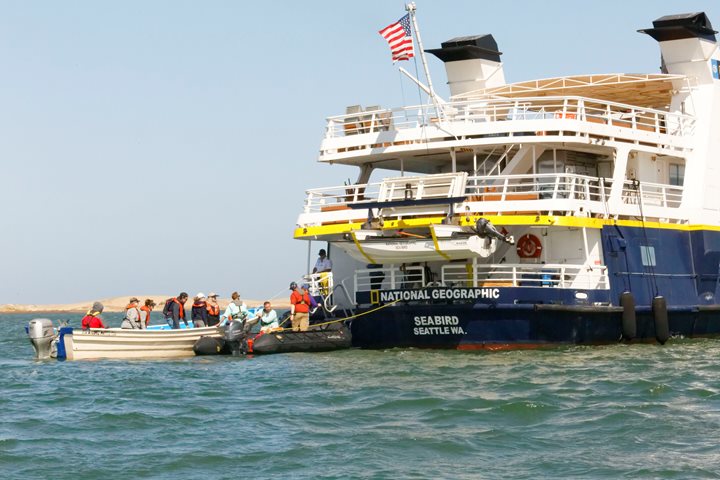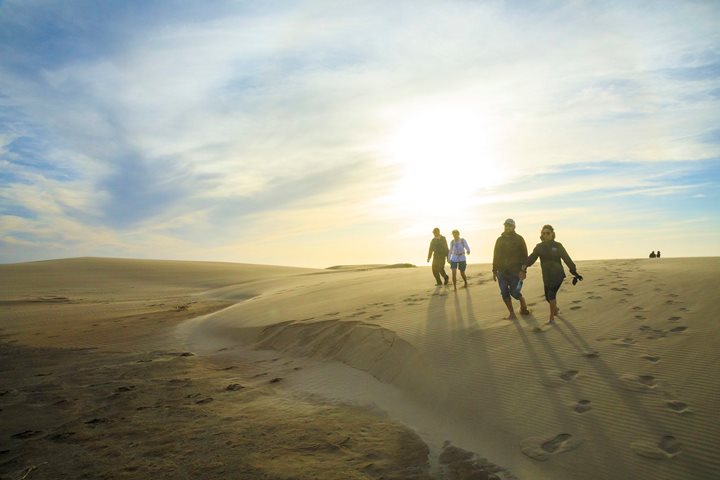“I’m not sure if my camera was focused or not – I couldn’t see it through the tears.”
On my afternoon panga tour, I sat next to a guest who made the remark above. I let it soak in. A small group of us floated placidly in the middle of Bahia Almejas. Around us, one gray whale after another spyhopped and rolled over as they exhaled heart-shaped plumes into the still, warm air. Moments before, a whale surfaced right next to the tiny boat, barnacles standing out like white badges on its mottled skin. The whale swished a pectoral fin in our direction as if to wave hello, then inhaled sharply – one of my favorite sounds, akin to blowing forcefully down a cardboard tube – before it descended beneath the waves.
Expeditions are wild, the animals we encounter are wild, and moments like this don’t happen every time we head out on an excursion. I have been fortunate to experience a number of them while working in these places for several seasons with Lindblad, and I don’t take them for granted. However, sharing such a moment with someone who has never experienced it before is a poignant reminder of how incredible it is to be in a place like Baja. As we drifted on a small local boat with local guides, dozens of some of the world’s largest animals cavorted around us. Occasionally, some came close enough to invite us to join in with them.
As if to prove the last point, not long after, a gray whale passed in front of the panga’s bow. The whale arched its fluke and proceeded to baptize the three women at the front with a copious amount of Almejas seawater. I’m proud to say that one of them was my mom, traveling as a guest on National Geographic Sea Bird and visiting Baja for the very first time.
I don’t think I could have asked for a better first day.







